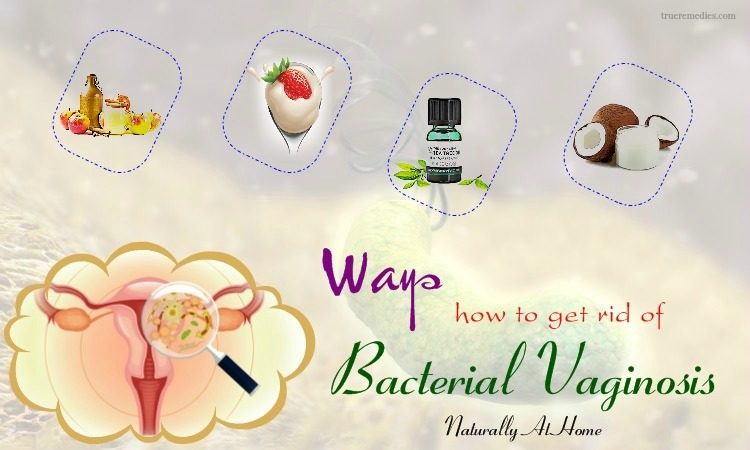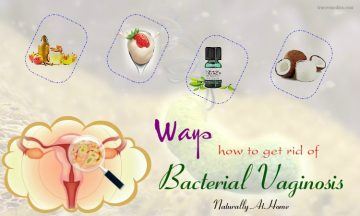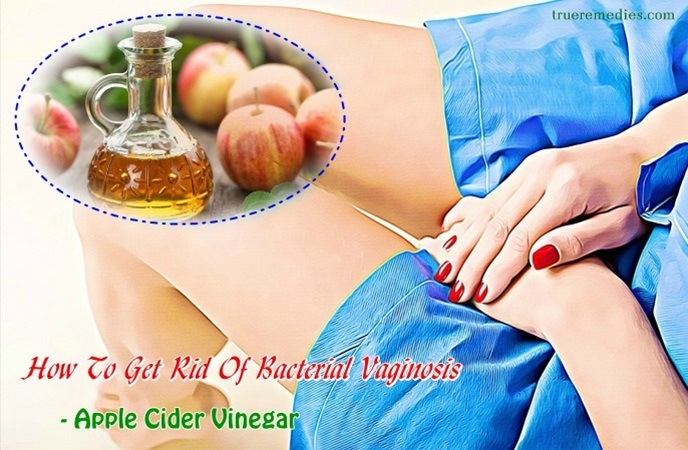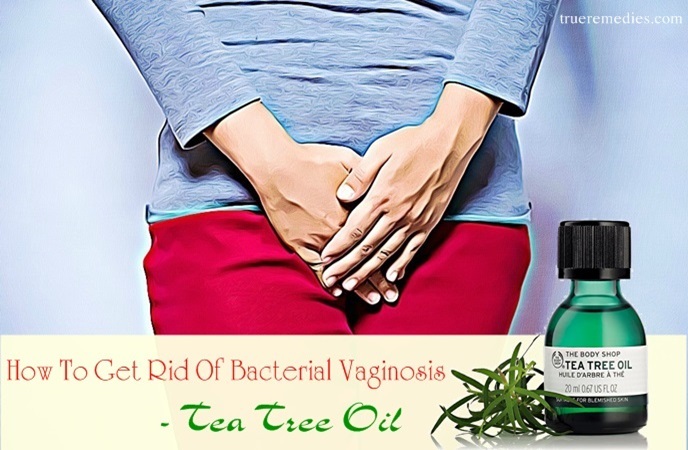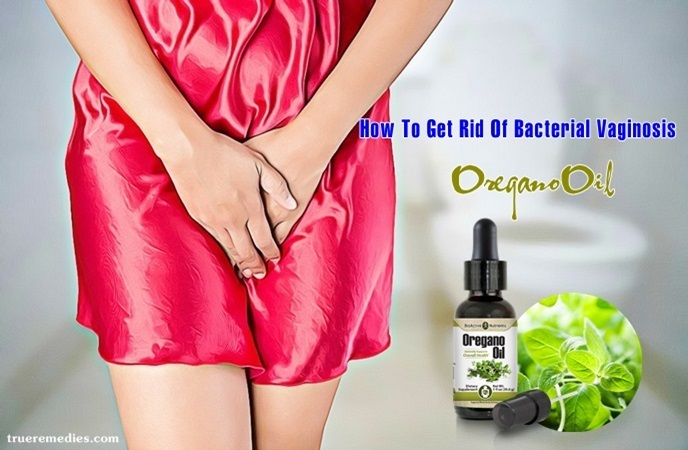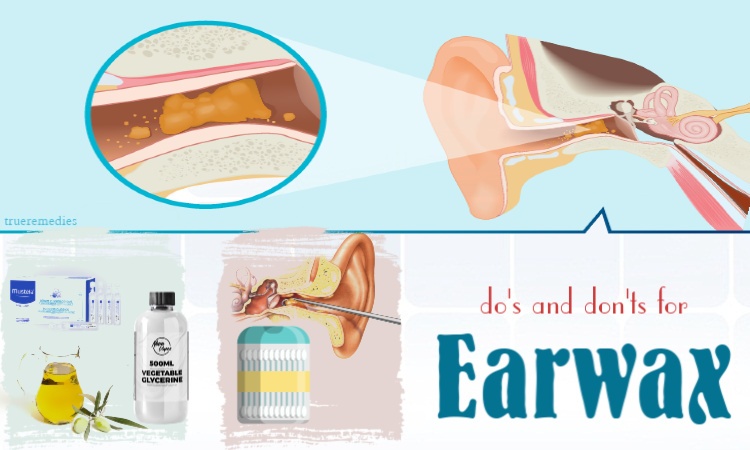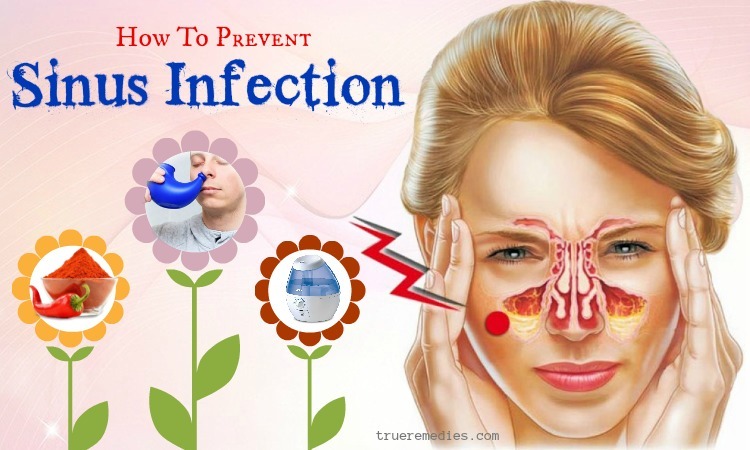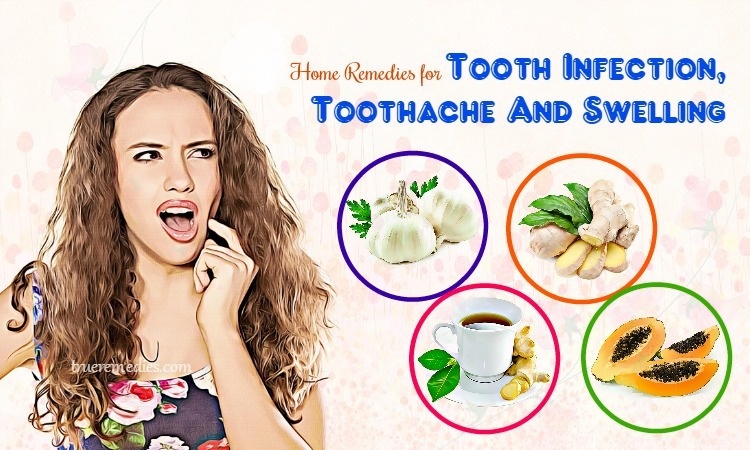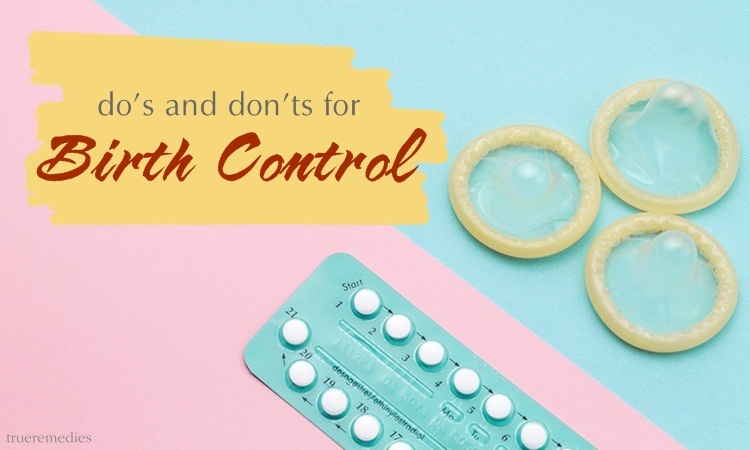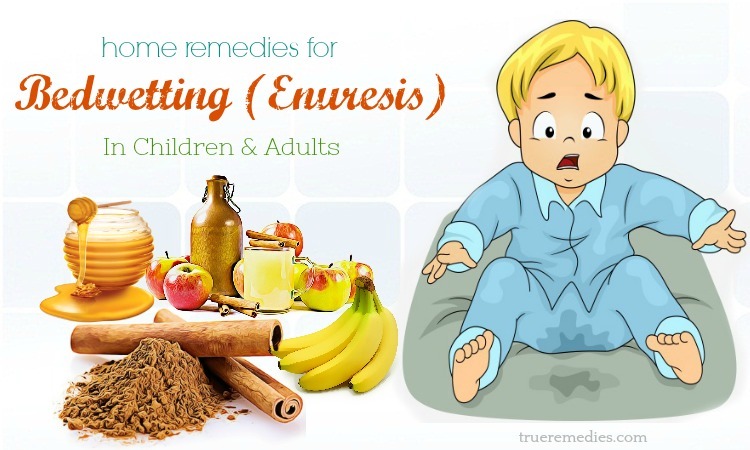Updated: 11/19/2019
Contents
Bacterial vaginosis (BV) basically is an overgrowth of bacteria (normal germs) in the female vagina, leading to a smell discharge. If you have this discharge in your vagina, it could be embarrassing. Nonetheless, you are not alone because this condition affects a large number of women worldwide. In accordance with a study named the National Health & Nutrition Examination Survey (NHANES), it was estimated that 21.2 million women from 15-49 years oil in the US tested positive for this infection. It accounted for about 30% of the total female population in this age group of America.
Bacterial vaginosis is a common symptom and does not mean that you have a sexually transmitted infection STI). In women who are in menstruating age, BV is considered the most common reason of vaginal discharge. In fact, having bacterial vaginosis may increase your risk of getting an STD.
This article on TrueRemedies.com will gather some basic information about this condition, then give you some of the best natural how to get rid of bacterial vaginosis symptoms in women so that you can save a lot of money and time on treating this issue.
What Is Bacterial Vaginosis?
In essence, bacterial vaginosis is a common vaginal infection impacting both young and middle aged women. Those women susceptible to those conditions impacting the reproductive organs are the ones with an active sex life, weakened or impaired immune system, or pregnant women. This includes yeast infections, vaginosis, and STDs [1].
Bacterial vaginosis is also called as Gardnerella vaginitis and vaginal bacteriosis. It happens for a variety of reasons, including abnormal responses of the human immune system and some changes in vagina’s pH balance. If the pH level in the vagina is more than 4.5 (3.8-4.2 is the normal level), then the environment inside the vagina is too alkaline, contributing to bacterial vaginosis.
TrueRemedies Partner Solutions

Need a Help from the Leading Expert Online, Available 24/7?
They’re all here and ready to answer your questions online or by phone. Keep asking questions until you get the answer you need.
Despite this infection may not lead to any pain or discomfort for a lot of women, suffering from BV untreated puts a female sufferer at a higher risk of getting other problems impacting the reproductive organs as well as immune system. They are various STDs (including HIV), different types of infections, and complications during both pregnancy and delivery [2].
What Causes Bacterial Vaginosis?
The overdevelopment of certain microbes or a bacteria imbalance often causes vaginal infections as well as diseases. To put in simple words, bacterial vaginosis is caused by an imbalance of the organisms (flora) naturally existing in the vagina. About 95% of the vaginal flora is lactobacillus bacteria, which help in keeping the pH level of vaginal area low and prevent the overdevelopment of other kinds of organisms. Depending on the type of infection, it may result in changes in vaginal discharge, unusual smells, pain and itching upon urinating.
The major culprit of BV is Gardnerella vaginalis, which is a tiny coccobacilli spore that is able to reproduce within the vagina and modifying the normal pH balance. Not all vaginosis infections are because of overgrowth of Gardnerella. Other bacteria could also result in infection too.
Is the infection a STD or contagious? In fact, BV could spread between female sexual partners, yet could not be passed from women to men. It is impossible to contract bacterial vaginosis from swimming pools, toilet seats, hot tubs, or from touching contaminated objects. Nevertheless, avoiding sex is highly recommended during the period of infection and after for several days.
What Are Symptoms Of Bacterial Vaginosis?
Now, how do you know whether or not you are suffering from bacterial vaginosis?
Here are most common signs and symptoms of this infection:
- Discharge may be more than normal or be associated with a fishy smell or musty odor.
- Changes in discharge, ranging from off-white, white to grayish color.
- Discharge can sometimes be creamy, clumpy, frothy or turn from gray to yellow green or white. It may result in changes in the urination, like urine cloudiness.
- Pain during urination, upon having sex or showering
- Burning may happen upon showering and use specific soaps as this could make the female vagina more irritated and alkaline.
- The skin both around and in your vagina may be sensitive, irritated and red.
Who Is At Risk Of Bacterial Vaginosis?
Some risk factors of bacterial vaginosis include:
- The prevalence of BV varies with age. This condition happens most commonly from teenage years to 40’s years old –meaning during the “reproductive years” of women. Vaginosis tends to impact some ethnicities more than others. Mexican and Black-American seem to develop this condition more often than others, including non-Hispanic, white women.
- The next risk factor of BV is douching too frequently. The practice of rinsing off your vagina with water or any cleansing agent may upset the vagina’s natural balance. As a result, an overgrowth of anaerobic bacteria is triggered and bacterial vaginosis forms. Because the female vagina is self-cleaning, so douching is not really necessary.
- A natural lack of lactobacilli bacteria is another risk factor of BV. If the natural environment in your vagina does not produce adequate good lactobacilli bacteria, you will be more likely to suffer from BV.
- Pregnant women tend to have an increased potential risk of infections, including BV. The pregnancy period strongly impacts the immune system as well as reproductive organs.
- Women who are living in poverty, obese, or having low levels of education, drugs abuser, or smokers also have a higher risk of BV.
- Having a new sex partner or multiple sex partners also increases your risk of BV, though doctors do not clearly understand the connection between bacterial vaginosis and sexual activity. Also, this condition happens more in women having sex with other women.
- There are also some mixed findings about the association between kinds of birth control pills / contraceptives and bacterial vaginosis risk. Some studies have discovered that if you take a copper coil for contraception, then you may develop a higher chance of infection [3].
When To See A Doctor?
It takes about 3 days to one week for the antibiotics (if used) to treat bacterial vaginosis. But, if the condition does not get better or even worse, you should consider seeking a reevaluation from a professional. There are some specific situations where it is advisable to consult your doctor to make sure that there is no extra complication going on, such as:
- You have a fever plus with vaginal discharge
- You suffered from vaginal infections in the past, but the discharge this time may be new or different.
- You have had sex with multiple or new sexual partners recently. Some STDs have signs and symptoms rather similar to BV.
Top 23 Effective Ways How To Get Rid Of Bacterial Vaginosis Naturally At Home
In reality, it is estimated that 1/3 of cases of bacterial vaginosis might disappear on their own. But, medical treatment is necessary if symptoms are available or during pregnancy in order to avoid any complication. However, prior to going for modern medical treatments, you should consider some natural tips on how to get rid of bacterial vaginosis using simple-to-find ingredients around your house.
1. Apple Cider Vinegar
Most of you know that apple cider vinegar is a versatile liquid in not only home kitchens but beauty care industry. Apple cider vinegar is really an incredible solution for many health and beauty issues, including bacterial vaginosis. It is a medium acid by nature, helping lower the pH level in the female vaginal environment to shift it back to optimal level [4].
Apple cider vinegar has acetic acid with antibacterial and antifungal properties, so it can repopulate levels of good bacteria in the vagina and balance the natural pH level of the body. It explains why it is listed in this list of best natural ways on how to get rid of bacterial vaginosis symptoms.
But, you should use raw unfiltered apple cider vinegar, not the cheaper brands because they do not have living enzymes responsible for beneficial effects.
There are a few ways in which apple cider vinegar could help treat bacterial vaginosis:
Method 1: ACV bathing
- Cleanse your bathtub carefully
- Fill it with warm water and add 1 cup of apple cider vinegar into (from 100-250ml)
- Soak your body into it for about 15 minutes, not more than 20 minute to avoid increasing pH level of the vagina too much/
- Repeat this routine thrice per week for good results.
Method 2: Douching
- Add 1 teaspoon of apple cider vinegar into 2 cups of water
- Put this mixture in a douching bag to do your douching routine
- Do this method daily till your problem goes away
Usually, it takes about 1-2 weeks to get good results. Do not rush the process by practicing douching too much because it just not only washes away bad bacteria but also good one as well.
Method 3: How to get rid of bacterial vaginosis using tampon soaking
Another way to use apple cider vinegar as one of effective ways on how to get rid of bacterial vaginosis is to:
- Soak a tampon in the combination between apple cider vinegar and water
- Then, leave that tampon in your vagina for one night and remove it the next morning
- Repeat this routine nightly
In addition to the above mentioned external methods on how to get rid of bacterial vaginosis using ACV, you should also make use of it internally. This ancient elixir contains full of healthy living enzymes and minerals which can alkalize the human body. You should drink 2 tablespoons of ACV mixed with warm water every morning to reap its benefits.
2. Hydrogen Peroxide
This is a tried and tested natural treatment for BV. A number of official studies have been carried out to look into the efficiency of this ingredient for BV. About 80% of participants no longer reported BV symptoms after daily douching with hydrogen peroxide for about 1 week [5] [6].
Being a natural disinfecting agent, hydrogen peroxide can eradicate bad bacteria within the body, helping to restore natural levels of good bacteria. Hydrogen peroxide also removes inflammation-causing irritants as well as other common problems accompanied by BV.
Just always use 3% hydrogen peroxide mixed when using it for treating BV. Some of the most effective ways to use this ingredient for BV symptom removal are:
Method 1:
- Mix equal parts of water and 3% hydrogen peroxide together
- Use it as a douche or apply it to the tampon and insert directly into your vagina
- After 20 minutes, no more than 30 minutes, take the tampon out
- Repeat this procedure twice per day for at least 2 weeks to get better result
Method 2:
- Get a silicone douche or a 100 ml syringe canister
- Fill it up with 1.5% concentrated hydrogen peroxide (mix 3% hydrogen peroxide with water to get that solution)
- Lie down on the bed or floor with logs propped up against the wall or something relaxingly. Hold the legs up contract pelvic floor muscles
- Push the douche into your vagina as far as you could without hurting yourself
- Squirt and hold that liquid in the vagina as long as possible
- Relax the legs, push that fluid out
- Repeat this routine regularly to get good results
Notes:
- Long-term douching with hydrogen peroxide might increase your risk of having pelvic inflammatory diseases.
- Changing the vaginal environment may also increase the susceptibility of infections to your vagina.
- Your skin may be burnt if you do not use the concentrated hydrogen peroxide solution carefully.
3. Yogurt
This is one of the most used standard ways on how to get rid of bacterial vaginosis. Live yogurt has lactobacillus which helps fight off harmful bacteria and maintain the right vaginal pH level. Also, this may help in treating diarrhea and vaginal infections, preventing urinary tract infections. Some people even use it for lactose intolerance and for dealing with high cholesterol level. Yogurt is also resorted for preventing sunburns and colorectal cancer [7] [8].
What you need to do is:
- Add 3 tablespoons of yogurt to a cotton wood or tampon
- Insert the tampon into your vagina for 30 minutes or so
- Rinse your down there area with warm water using mild soap
- Repeat this routine twice per day for 5 days
To get faster results, you should also consume a glass of yogurt every day to restore the normal bacteria balance in your vagina.
Notes:
- Just buy plain yogurt because flavored type is not efficient in fighting against BV.
- Read the label to make sure that the yogurt you use has live cultures.
4. Tea Tree Oil
Herbalists have used tea tree oil for long time ago to treat a variety of ailments such as bad breath, acne, dandruff, Athlete’s foot, lice, thrush, dental plaque, genital herpes wounds, nail infections, MRSA, or burns.
This compound consists of both anti-fungal and anti-bacterial properties. In addition to decreasing and depleting awful smell familiar with BV sufferers, it also helps defeat germs if used regularly [9].
In accordance with Mayo Clinic, tea tree oil is able to kill off yeast along with some kinds of bacteria. But, it is always recommended to consult a doctor before using it for any treatment.
Method 1:
- Add several drops of tea tree oil to a small bowl of warm water
- Stir them well
- Use this mixture to rinse your down there area
- Do this daily for 3-4 weeks to get good results
Method 2:
- Add 3 drops of tea tree oil into 3 cups of white vinegar
- Pour that mixture into your tepid bath water
- Soak yourself in this solution for 30 minutes or so
- Do this 3 times per week for 1-2 months as necessary
Notes:
- Some people might develop allergic reactions to tea tree oil, such as mild skin irritation and blistering rashes. So, always do a patch test prior to using it.
- Do not ingest tea tree oil otherwise you may develop potentially dangerous reactions even when used in just small doses, be it autoimmune disorders, drowsiness, severe rash, coma, uneven gait, lethargy, confusion, and gastrointestinal disturbance.
5. Coconut Oil
This is a rock star in regard to tips on how to get rid of bacterial vaginosis. With antibacterial, antiviral and antifungal properties, coconut oil can kill germs which result in BV and prevent its reoccurrence.
All you have to do is:
Method 1:
- Apply organic coconut oil to your affected area 3 times per day
- Repeat this routine daily till you notice significant improvements.
Method 2:
- Soak a tampon in organic coconut oil
- Then, insert it directly into your vagina
- Wait for a few hours before removing the tampon and rinsing your vagina off with tepid water
- Repeat this procedure daily for a few days
In addition to the methods mentioned above, you should also add coconut oil to your daily cooking as much as you could to improve your immune system and speed up the healing process.
6. Indian Lilac
Also known as margosa or Neem, Indian Lilac consists of anti-fungal and antibacterial properties helping to reduce inflammation and itching while also killing off germs that result in the infection [10].
- Take a handful of Indian Lilac leaves to put into a pan
- Heat it up without adding any water
- Let the leaves cool down before grinding them into a good powder
- Mix 2 teaspoons of this powder with some water to create a fine paste
- Apply it both in and around your down there area
- Wait for 30 minutes before washing it off with tepid water
- Do this 2 times per day till your problems goes away
7. Tea Bags
Tea has a substance named tannins, which feature with astringent and antibiotic properties, so it can soothe the burning sensation while decreasing irritation and swelling associated with BV (if any).
- Soak a tea bag into a cup of warm water for 10-15 minutes
- Place it in the fridge for several minutes
- Take it out and apply it externally over your affected area
- Do this 3-4 times per day for several weeks to get faster results
You should feel a relief from itching sensation when applying this method.
8. Garlic
Not only is garlic extremely potent, but it also has useful antiseptic and antibacterial properties that could help you remove bacterial infections. Thus, it is listed on this series of methods on how to get rid of bacterial vaginosis [11] [12].
A fresh garlic clove can easily cure infections, but it is important to catch the infection early. To make use of this spice, follow these steps:
- Put a garlic clove into your vaginal before going to bed
- In the morning, remove it off
- Keep repeating this procedure for 1-2 days till all itchiness disappears (if any)
The garlic will cause your vagina to produce a watery discharge. Just a night’s treatment might be enough to kill the infection or it may need to be repeated the next night. The reason why this treatment should be done at bedtime is that there is a link between the vagina and the mouth.
The moment that garlic is put into your vagina, the taste of garlic will travel up to your mouth. Most people find this strong flavor rather annoying during daytime, so it is better to do at night.
In fact, a high dose of garlic, or a cut-open garlic clove, if inserted into a healthy vagina, will “burn” the healthy skin. But for those women with advance bacterial vaginosis, their skin is already “burned” and red, then the garlic will cure that infection by killing yeasts and the skin will repair itself.
Besides, eat garlic in both raw or cooked form every day can also help you reduce BV symptoms naturally. In case you cannot tolerate its taste, you can use garlic capsules after having a consultation of a doctor.
9. Cold Compress
This sounds too simple to be good, but it does work for mild cases of BV. If you experience vaginal irritation or inflammation, then a cold compress will soothe the affected site and alleviate the pain temporarily.
10. Oregano Oil
This oil has both antifungal and antibacterial properties that could help fight germs responsible for BV. It even prevents a recurrence of BV.
What you have to do is:
- Mix 1 tablespoon of olive oil with 3 drops of oregano oil
- Apply the mixture over your affected area
- After 2 hours, remove it off
- Do it twice per day till you see improvement
You can also take advantage of oregano oil as a daily supplement. Just simply mix 3 drops of oregano oil with a glass of tepid water. Have it twice per day. Do this routine for 1-2 months for the best results.
Note: Sometimes, oregano oil when used externally also causes burns.
11. Fenugreek
This is another option you can try right instantly if you are looking for effective methods on how to get rid of bacterial vaginosis. Fenugreek seeds could improve the pH level of your vaginal environment, enhance your immune system and speed up the healing process [13].
Method 1:
- Take 2 tablespoons of fenugreek seeds to soak in a glass of water
- Leave it there overnight, have this solution the next morning before enjoying your breakfast
- Do this every day for 1 month till you get good results
Method 2:
- Soak 1 teaspoon of fenugreek powder in about 1 cup of yogurt
- Have it twice per day for a few days till your BV symptoms subside.
Method 3:
- Steep 1 teaspoon of fenugreek seeds in a cup of hot water for 5 minutes or so
- After straining, add some honey into
- Have this tea 2-3 times per day as necessary
12. Oak Bark
You can find oak bark in any pharmacy. Then, take the steps below to alleviate BV symptoms:
- Take 250 grams of oak bark and cover it with about 2 liters of cold water
- Leave it there for 3-4 hours
- Filter the oak bark and use the liquid only
- Put that liquid into your warm bath water and stir
- Soak yourself in this solution to relieve inflammation and heal wounds (if any)
- Do this routine daily
Or you can also douche your vagina with the mixture of 2 oak barks and 1 cup of hot boiled water after left cool down.
Note: Remember that oak bark could not be reused twice, so you should bought enough if you decide to carry out a few procedures.
13. Avoid Harsh Soaps And Products Near Your Genitals
You should know that washing your vagina with commercial soaps (usually alkaline ones) may cause imbalances in microflora and pH level, worsened skin irritation and increased vaginal discharge. Thus, it is recommended avoiding using feminine deodorant spray, dyed or perfumed products near your genital, particularly on the inside.
Though it sounds strange, most experts and dermatologists recommend that you should give your vagina a rest for a few days an avoid using soap as well. In those days, cleanse your genital area with warm water.
Also, change to a mild laundry detergent. After that period, use mild, natural and non-deodorant soaps without over washing your vagina (more than once per day) because it has self-cleaning ability.
Besides, avoid using strong detergents with chemicals and perfumes to wash your underwear because it may rub off on your skin, and irritate the genitals. In order to prevent any potential infection or irritation, you should wash the outside of your genital area just once per day with castile soap or unscented glycerin.
14. Upgrade Your Tampons
During menstruation, you should use natural/organic cotton tampons. Make sure that you change them often. Unscented tampons or pads which do not have harsh chemicals, perfumes or dyes are best options. Change tampons at least thrice per day to avoid bacterial overgrowth. Also, use panty liners or pads.
15. Avoid Intercourse During The Infection
It is wise to make use of a condom during sex in case you have a new partner. Also, limit the quantity of sex partners that you have as well. The more partners you have during your lifetime, the more likely you are to acquire infections as well as an STD. This is particularly true when the intercourse is not protected (for example, no condom), even if the female takes birth control pills. Keep in mind that such pills do not protect against STDs and does not prevent or stop the transfer of bacteria.
16. Boost Your Immunity For Preventing Recurrent Infections
It is very common for the condition of BV to recur in 3-12 months. It could recur even when the infection is treated. Maybe, this is due to the risk factors not being properly addressed. Or, it could be due to impaired immunity of the sufferers, leading to higher chance for illnesses and infections. Some tips to improve your immunity are:
- Take probiotics or consume probiotic foods which have lactobacillus to help increase the quantity of “good bacteria” in the vagina and rebuild a balance vaginal environment. Eat cultured or fermented probiotic foods like kimchi, yogurt, kombucha or kefir.
- Eat an unprocessed, healthy diet
- Address nutrient deficiencies, allergies, leaky gut syndrome, diabetes and autoimmune disease
- Practice exercise regularly
- Sleep enough
- Manage anxiety and stress
- Consider whether or not your current used medications cause recurrent infections
How To Get Rid Of Bacterial Vaginosis – Preventative Measures
Oftentimes, BV occurs for no apparent reasons. They could not be prevented, in general. Nonetheless, there are some things you could do to avoid upsetting the normal balance of bacteria within your genital area:
- Avoid pushing water into your genital area to clean it – also called douching.
- Avoid adding antiseptics, scented soaps, shampoos, perfumed bubble bath,… to the bath water
- Avoid using strong detergents to wash underwear
- Avoid washing around your vulva and vagina too frequently.
Vaginal health is very important for the overall health of women. We have to be frank that when your “down there” area is happy, so are you. In fact, there is no good way to prevent BV recurs from happening. Despite the measures above are suggestions, there is no absolute evidence that applying them will 100% help.
If your BV symptoms persist, go to see your doctor and he will do some tests to make sure that you have BV, not any other infection. If it is definitely BV, then you will be treated with antibiotics. Sometimes, regular use of preventative antibiotic vaginal gel might be advised.
For any contributing ideas about this topic of 23 Natural Ways On How To Get Rid Of Bacterial Vaginosis Symptoms, do not hesitate to drop your words in the comment box below.
To have further tips and tricks about health and beauty, refer our How To page.

